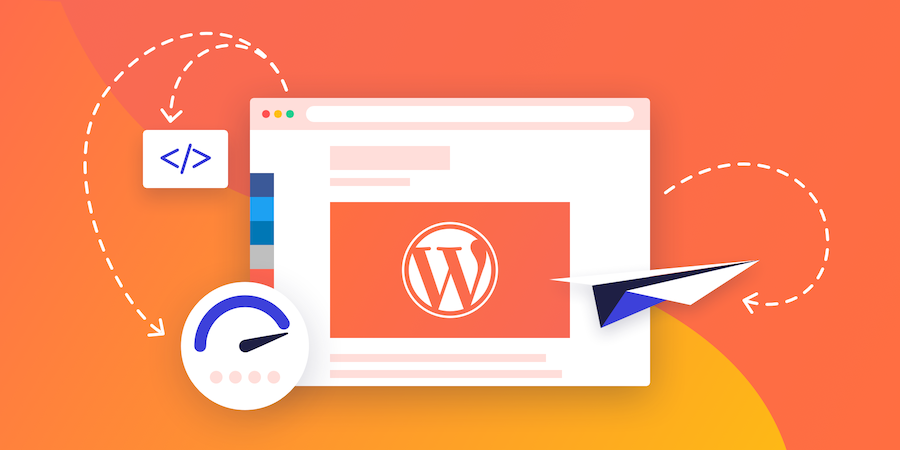
Free 1 landing page Gift from SWAtechnologies
August 19, 2023
Absolute 5 SEO Strategies for Magento Store
January 6, 2024Ultimate Guide to Simple WordPress Development: Unleash the Power of Customization
Introduction
WordPress has emerged as one of the most popular website development platforms, thanks to its user-friendly interface and extensive customization options. Whether you are an aspiring developer or an experienced professional, understanding Simple WordPress development and its possibilities can greatly enhance your website building capabilities.
I. Understanding Simple WordPress Development
Before delving into the world of Simple WordPress development, it’s important to grasp the fundamental concepts behind its architecture. WordPress offers two distinct platforms: WordPress.com and self-hosted WordPress.org. While WordPress.com provides a simplified setup and hosting solution, self-hosted WordPress.org grants you complete control over your website.
II. Getting Started with Simple WordPress Development
To begin your Simple WordPress development journey, you need to set up a local development environment. This allows you to work on your website offline before making it live. After establishing the environment, installing WordPress is a straightforward process. Once installed, you gain access to the administration dashboard, where you can manage site settings, add content, and control various features.
III. Exploring the WordPress Core
To truly leverage WordPress’s capabilities, it’s essential to understand its core structure and organization. Examining WordPress files reveals the intricate network of directories and files that form the backbone of the system. Through this exploration, you can grasp the functionality of essential core components and their significance in building a robust website.
IV. Customizing the WordPress Theme
WordPress themes play a pivotal role in the visual appearance and functionality of a website. By carefully selecting and installing a theme suitable for your project, you can shape the overall user experience. Customization options within themes allow you to tailor various aspects, from colors and typography to layout and functionality, ensuring your website aligns perfectly with your vision.
V. Unleashing the Power of Plugins
WordPress plugins are powerful tools that extend the functionality of your website. These add-ons offer a vast range of features, such as contact forms, social media integration, e-commerce capabilities, and much more. By identifying and installing essential plugins, you can enhance your website’s performance and offer a more personalized experience to your visitors.
VI. Theme Development from Scratch
For those seeking complete control and uniqueness in their website design, custom theme development is the way to go. By utilizing HTML, CSS, and PHP, you can build a theme from scratch. This opens up endless possibilities for creativity and customization, ensuring your website stands out from the crowd.
VII. Extending Functionality with Custom Plugins
While pre-existing plugins cater to many needs, there may come a time when custom features and functionalities are required. In such cases, creating custom WordPress plugins is the answer. By understanding the plugin development process, you can integrate tailor-made solutions into your website and address specific requirements.
VIII. Optimizing WordPress for Performance
Website performance is crucial for user satisfaction and search engine rankings. To optimize a WordPress website, you can implement various techniques. Employing caching mechanisms, image optimization, and database optimization can significantly boost loading times and overall site performance.
IX. Ensuring Website Security
Protecting your WordPress site from potential cyber threats is of utmost importance. Implementing security measures, such as strong passwords, two-factor authentication, and regular backups, is essential to safeguard your data. Utilizing security plugins, coupled with adopting best practices, can help fortify your website’s defense against malicious activities.
X. Search Engine Optimization (SEO) for WordPress
To ensure your website reaches its target audience, optimizing it for search engines is crucial. Performing keyword research, incorporating relevant meta tags, and creating SEO-friendly content can greatly improve your website’s visibility in search engine results. These techniques maximize the chances of attracting organic traffic to your site.
XI. Utilizing Advanced Simple WordPress Development Techniques
Beyond the basics, advanced Simple WordPress development techniques offer further opportunities for customization and functionality. By leveraging custom post types and taxonomies, you can structure content in unique and inventive ways. Hooks, actions, and filters allow you to modify core functionality and add advanced features seamlessly.
XII. Multilingual Websites with WordPress
With the expansion of global audiences, building multilingual websites has become essential. WordPress offers various translation plugins that simplify the process of managing multilingual content. These plugins enable you to provide a localized experience for your visitors, thereby expanding your reach and enhancing user engagement.
XIII. E-Commerce Solutions with WordPress
WordPress isn’t just for blogging or informational websites; it is also a robust e-commerce platform. By utilizing popular e-commerce plugins, such as WooCommerce, you can transform your WordPress site into a fully functional online store. These plugins provide a wealth of features, including product catalogs, shopping carts, secure payment gateways, and inventory management.
XIV. Mobile Responsiveness and WordPress
In an increasingly mobile-driven world, ensuring your website is optimized for different devices is crucial. Responsive web design, achieved through WordPress themes or custom development, allows your website to adapt seamlessly to different screen sizes. By following best practices, you can provide a consistent and enjoyable browsing experience for your visitors, regardless of the device they use.
XV. Integration with Third-Party Services
WordPress’s flexibility extends beyond its core features. By seamlessly integrating with various third-party applications and services, you can unlock additional functionalities. Utilizing APIs and plugins, you can integrate services such as social media platforms, CRM tools, email marketing services, and more, further enhancing your website’s capabilities.
XVI. Troubleshooting Common WordPress Issues
As with any complex system, encountering issues in WordPress is not uncommon. Identifying and resolving common WordPress issues is essential for maintaining a smooth running website. Numerous resources and techniques are available to troubleshoot common errors, ranging from plugin conflicts to database connectivity problems.
XVII. WordPress Maintenance and Updates
To ensure your WordPress website remains secure and performs optimally, regular maintenance is necessary. Updating WordPress itself, along with themes and plugins, is crucial to patch security vulnerabilities and access new features. Additional maintenance tasks, such as monitoring website performance, optimizing databases, and managing backups, help keep your website in top shape.
XIX. Summary
Throughout this ultimate guide to Simple WordPress development, we have explored the vast possibilities and customization options provided by the platform. From understanding the fundamental concepts to building custom themes and plugins, WordPress unleashes the power of customization. Its flexibility, combined with a vibrant community and extensive documentation, makes it an exceptional choice for both beginners and experienced developers.
XX. Frequently Asked Questions (FAQs)
Q: Is WordPress free to use?
A: Yes, WordPress is an open-source platform that is free to use.
Q: How do I install WordPress on my website?
A: Installing WordPress is a simple process. You can download the WordPress files from the official website, set up a database, and follow the installation instructions to complete the setup.
Q: Can I use WordPress for my e-commerce website?
A: Absolutely! WordPress offers robust e-commerce plugins like WooCommerce, which enable you to create and manage an online store.
Q: What is the difference between WordPress.com and WordPress.org?
A: WordPress.com is a hosted platform where you can create a website without the need for separate hosting, whereas WordPress.org provides self-hosted solutions with more control over customization and functionality.
Q: How can I optimize my WordPress website for speed?
A: Techniques such as caching, minifying files, optimizing images, and using a content delivery network (CDN) can help improve the speed and performance of a WordPress website.
Q: Is it necessary to update WordPress, themes, and plugins regularly?
A: Yes, regular updates are crucial for security purposes and to access new features and improvements. Keeping everything up to date ensures a secure and optimal website.
With these insights and recommendations, you are now equipped to confidently navigate the world of Simple WordPress development, harnessing its power and unleashing your creativity to build stunning, functional websites.

